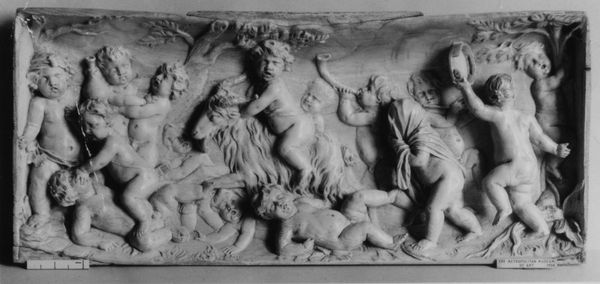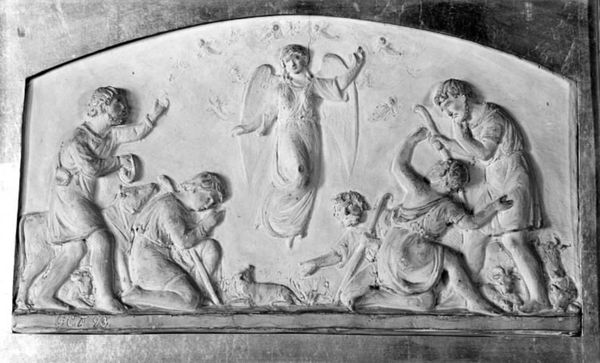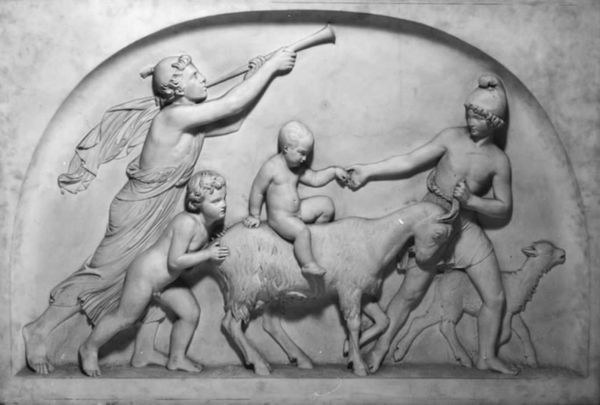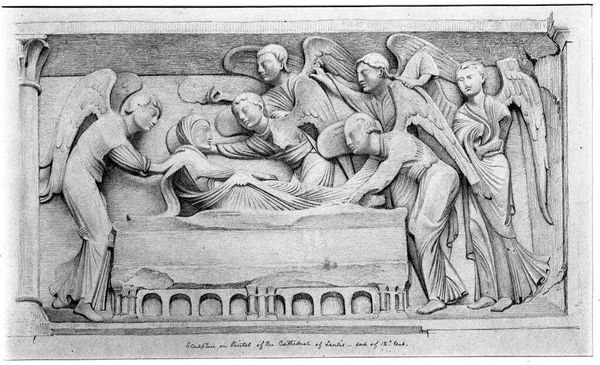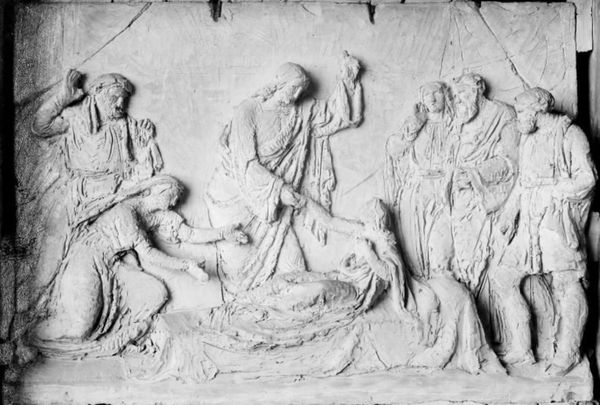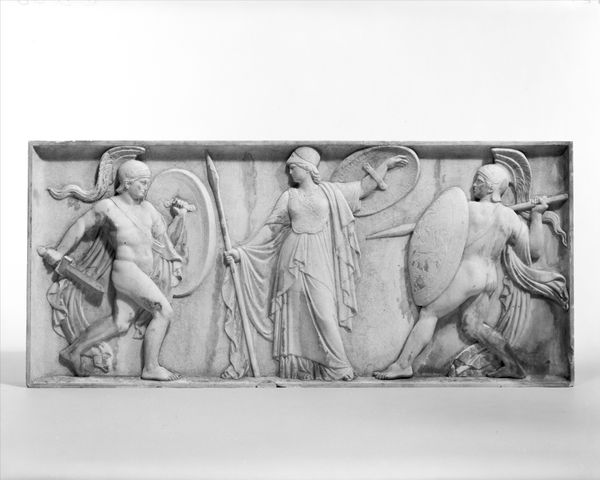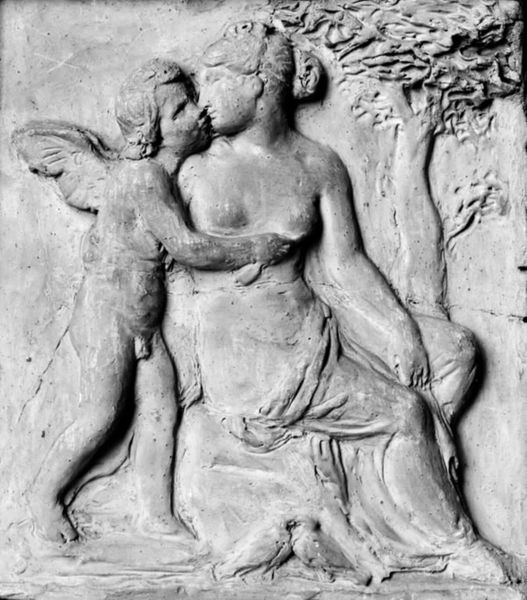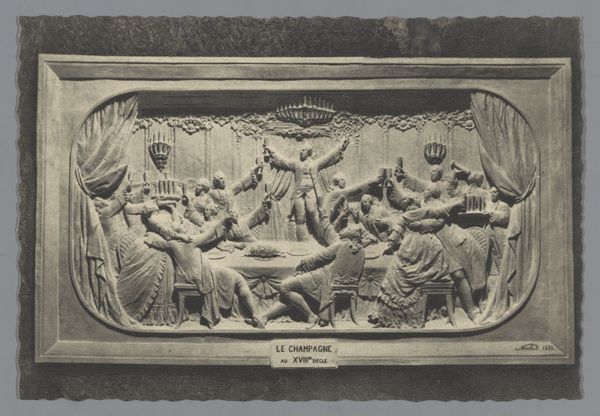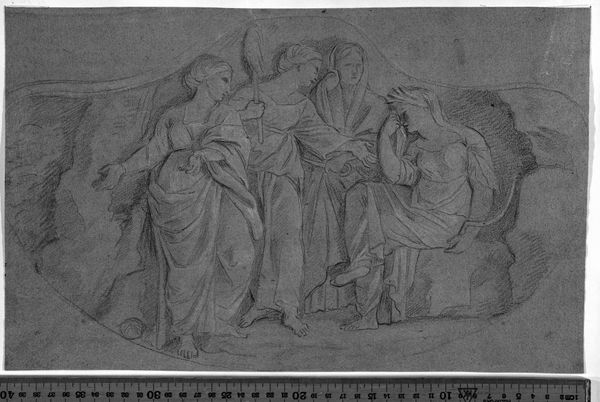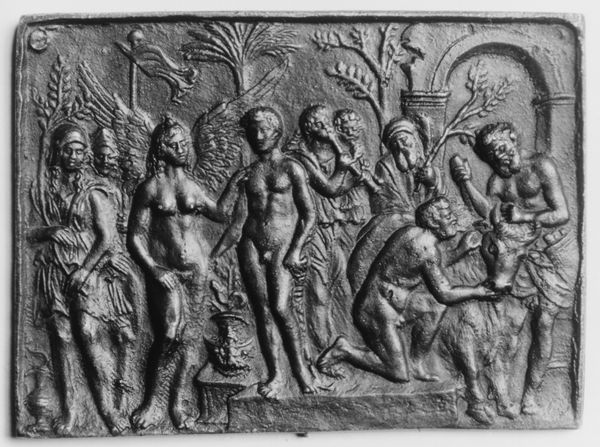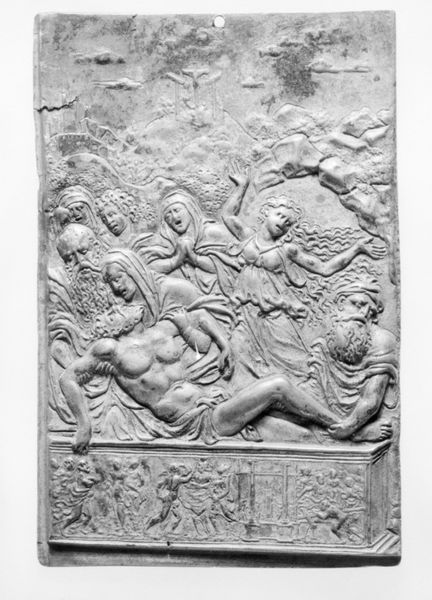
relief, sculpture, marble
#
neoclacissism
#
narrative-art
#
sculpture
#
relief
#
classical-realism
#
figuration
#
black and white theme
#
sculpture
#
black and white
#
men
#
history-painting
#
academic-art
#
decorative-art
#
marble
#
statue
Dimensions: Pedestal, 33-1/4 x 33 in. (84.5 x 83.8 cm); L. 46 in. (116.8 cm.)
Copyright: Public Domain
This is "Priam Ransoming Hector's Body," carved in marble by Giovanni Maria Benzoni, most likely in the mid-19th century. Marble has been a favored material of sculptors since antiquity, prized for its smooth texture, and the way it can be worked to a fine degree. The whiteness of marble, when unmarred, has long been associated with purity. The scene here shows a moment from Homer’s Iliad, when the Trojan King Priam begs Achilles to return the body of his son Hector. Look closely, and you can see the incredible level of detail Benzoni achieved: the folds of the drapery, the expressions on the figures’ faces, and the muscularity of Achilles' body. The making of such a sculpture was a laborious process. The artist would have started with a rough block of marble, gradually carving away material to reveal the figures within. The work demanded skill, patience, and physical strength. Considering the intense labor of production makes us think about the social context in which it was made. Benzoni's sculpture was intended to be appreciated as a work of fine art, but it's also a testament to the skill and labor of the artist, pushing us to challenge the traditional distinctions between art and craft.
Comments
No comments
Be the first to comment and join the conversation on the ultimate creative platform.

